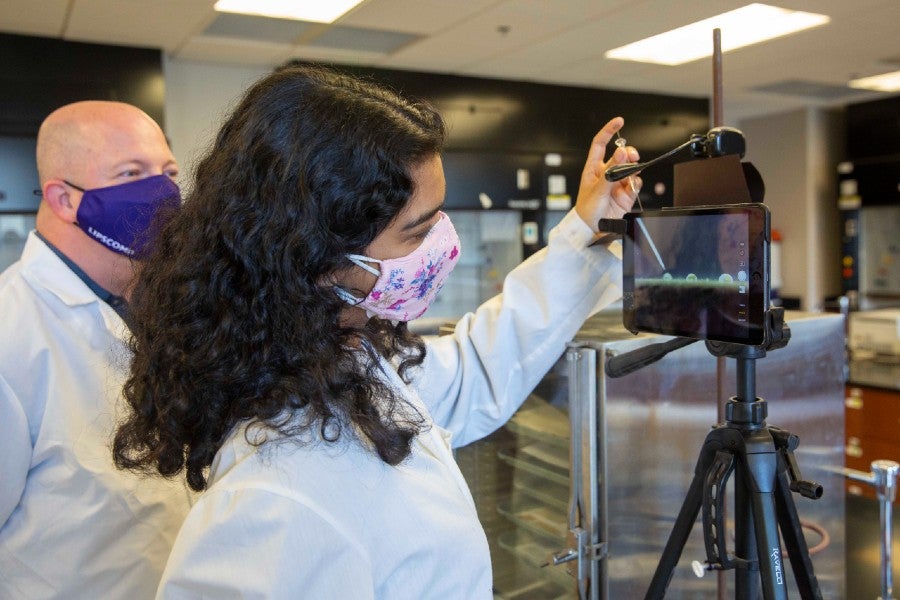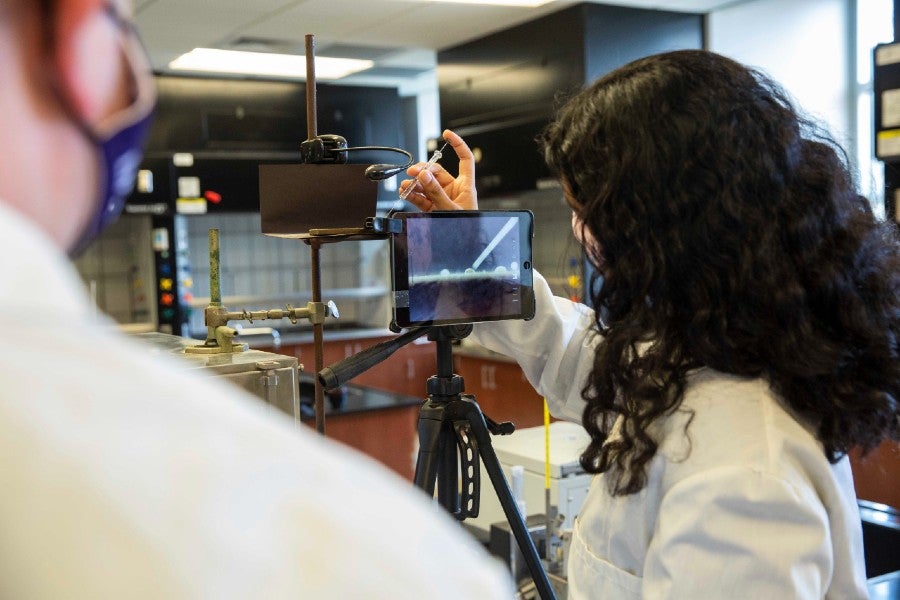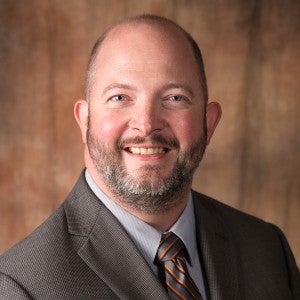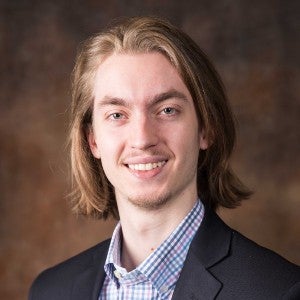Honors student, alumnus referenced in top international journal
Chemistry students’ and professor’s work to diminish infection risk from bacteria published in prestigious journal.
Janel Shoun-Smith | 615.966.7078 |

A Lipscomb honors student and alumnus, both in biochemistry, are included among six Lipscomb students referenced in a research article published in a top tier multidisciplinary scientific publication, iScience.
Results of a research project by Lipscomb chemistry Professor Brian Cavitt, that someday could make a big dent in the prevalence of infections in hospitals and beyond, was published by iScience, a scientific journal that SCOPUS review lists as in the top 9% of prestigious journals in the U.S. and in the top 6% of prestigious journals worldwide.
Among the six Lipscomb students who also worked on the project and are referenced in the article are honors student Pooja Patel, a junior biochemistry major from Nashville, and Spencer Oskin, a 2019 honors graduate from Hendersonville, Tennessee.
“Hearing about his research, I was so interested,” said junior Patel, a biochemistry major who helped Cavitt aggregate much of the data for the iScience article. “Anything bacteria-related is really applicable for today. Right now we are all very aware that bacteria growth is everywhere,” said Patel, who hopes to go to medical school after completing her undergraduate degree.

Student Pooja Patel was involved in testing various bacteria to see how easily they stick to coatings patented by Professor Brian Cavitt.
The nugget of an idea that resulted in a 15-year research journey for Cavitt was sparked on a 2005 mission trip to Nias, a small island in Indonesia that on Dec. 26, 2004, suffered a massive earthquake and tsunami.
Cavitt observed conditions on the island, which had two hospitals with 250 beds for the entire population of 750,000, he noticed that the hospital where he was serving had only a mountain stream as a water supply.
Such streams are not a healthy daily water source, he noted, especially for hospital patients as the bacteria in the water can cause infections. Cavitt started to wonder: if we can’t change the source of water, can we find a way to inhibit the bacteria in the water so it doesn’t harm the patients as much.
Cavitt and his fellow researchers were unable to apply the concept to water purification, but the experience encouraged him to apply this idea to surfaces: is it possible to stop bacteria from settling on a surface in the first place, especially surfaces that people touch and use on a daily basis?
The answer is yes, and that answer led Cavitt to develop and obtain patents on two anti-bacterial coatings, involve numerous Lipscomb students in testing various bacteria to see how easily they stick to those coatings; and making presentations at scholarly conferences across the nation.
He was invited to submit his work to iScience by one of the journal’s editors, who saw him present on his research at the American Chemical Society national meeting in early 2020.

Brian Cavitt
Battling bacteria in the lab
Most of the current anti-bacterial methods, such as the chemicals used today in common products like hand sanitizers and cleansers, work by threatening and killing the bacteria. But this method causes bacteria to resist and develop immunity over time, Cavitt said.
Bacteria’s rising immunity is one reason hospitals have seen a rise of in-patient infections over the years, he said. Once fully researched and applied, this approach to bacterial reduction holds the potential to be used on various types of medical equipment and devices to vastly reduce infections in health care settings.
The iScience paper involves work Cavitt and Lipscomb students have performed over the past three years or so. The researchers measured how easily the five different bacteria—staph, E coli, P. aeruginosa (which forms biofilms much faster than most other bacteria) and each of the causative bacterium of typhoid and pneumonia—adhere to the surface of metal or glass that has been coated with the biofilm-resistant coatings.
“This article is taking years of bacterial testing and condensing it into one larger story,” Cavitt said of the forthcoming publication. “We have known that it does work, but up to this point, we hadn’t really been able to illustrate how it works. That is where this research is now distinguished: it explains the energetic reasons why bacteria don’t attach to some surfaces.”
Research project hones students’ scholarly skills
Cavitt, who holds a B.S. in chemistry and missions from Abilene Christian University and his Ph.D. in polymer science and engineering from The University of Southern Mississippi, came to Lipscomb from his alma mater Abilene, where he earned tenure and was awarded as the Undergraduate Research Mentor of the Year in 2014.
He didn’t change his ways at Lipscomb, almost immediately involving students in his research endeavors.
An internal Lipscomb summer grant allowed Cavitt to hire students in 2017 to help collect the data now presented in iScience and various students in the Langford-Yates summer fellowship program have contributed to the research efforts over the years.

Spencer Oskin
Spencer Oskin (’19), an honors graduate and Ward Scholar from Hendersonville, Tennessee, who worked with Cavitt in the summer of 2017 collecting and recording data on how sticky the various bacteria were on the various surfaces.
Not only did the scientific benchwork help Oskin understand abstract concepts and how they apply in real life, but Cavitt’s encouragement to present the research in academic venues nationwide was also valuable to his later studies, said Oskin, who is now attending East Tennessee State University’s medical school.
“I presented at the American Chemical Society National Meeting and the Southeastern Undergraduate Research Conference which helped me learn a lot about the professional scientific community. The experience was also a definite highlight in my medical school application,” he said. “Creating a professional scientific presentation is much different than any presentation I had given in undergraduate classwork. That experience has helped me in medical school where these types of presentations are much more common,” he said.
Oskin has also worked on research projects with Lipscomb’s pharmaceutical science researchers and ETSU’s Department of Surgery.